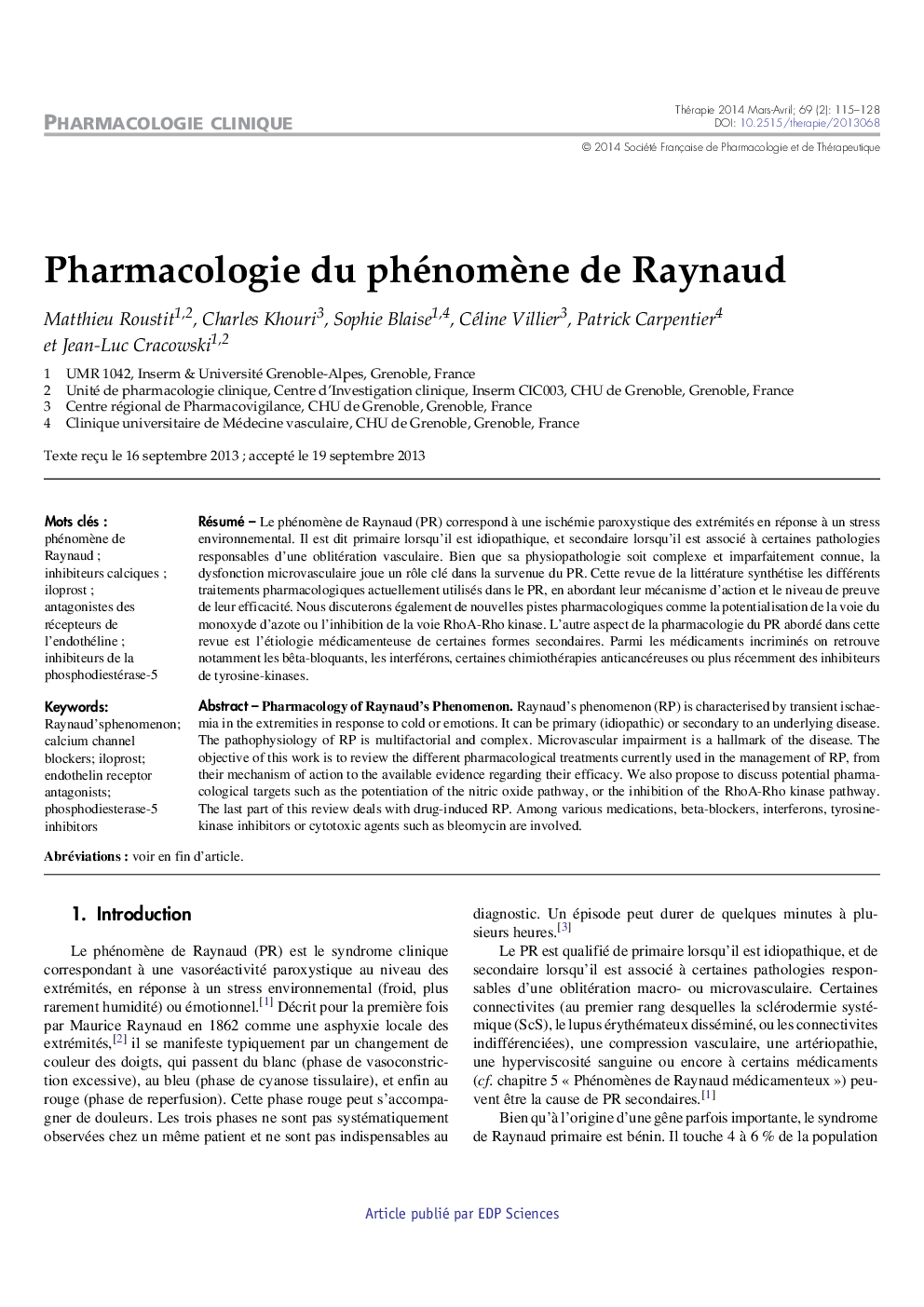| Article ID | Journal | Published Year | Pages | File Type |
|---|---|---|---|---|
| 2578849 | Thérapie | 2014 | 14 Pages |
Abstract
Raynaud's phenomenon (RP) is characterised by transient ischaemia in the extremities in response to cold or emotions. It can be primary (idiopathic) or secondary to an underlying disease. The pathophysiology of RP is multifactorial and complex. Microvascular impairment is a hallmark of the disease. The objective of this work is to review the different pharmacological treatments currently used in the management of RP, from their mechanism of action to the available evidence regarding their efficacy. We also propose to discuss potential pharmacological targets such as the potentiation of the nitric oxide pathway, or the inhibition of the RhoA-Rho kinase pathway. The last part of this review deals with drug-induced RP. Among various medications, beta-blockers, interferons, tyrosinekinase inhibitors or cytotoxic agents such as bleomycin are involved.
Keywords
CGRPRCSAmpCGCsPDE-5ITKPGI2NO synthaseET-1AMMEndotheline-1IRSASINOSProstacyclineSCsinhibiteurs de l’enzyme de conversionADMAEndothelin receptor antagonistsSclérodermie systémiqueMonoxyde d’azoteIloprostinterferonIFNasymmetric dimethylarginineVascular Endothelial Growth Factor (VEGF)vascular endothelial growth factor.autorisation de mise sur le marchéCalcium channel blockersInhibiteurs calciquesphosphodiesterase-5 inhibitorsPhénomène de Raynaudcalcitonin gene-related peptideIECRock
Related Topics
Health Sciences
Pharmacology, Toxicology and Pharmaceutical Science
Pharmacology, Toxicology and Pharmaceutics (General)
Authors
Matthieu Roustit, Charles Khouri, Sophie Blaise, Céline Villier, Patrick Carpentier, Jean-Luc Cracowski,
